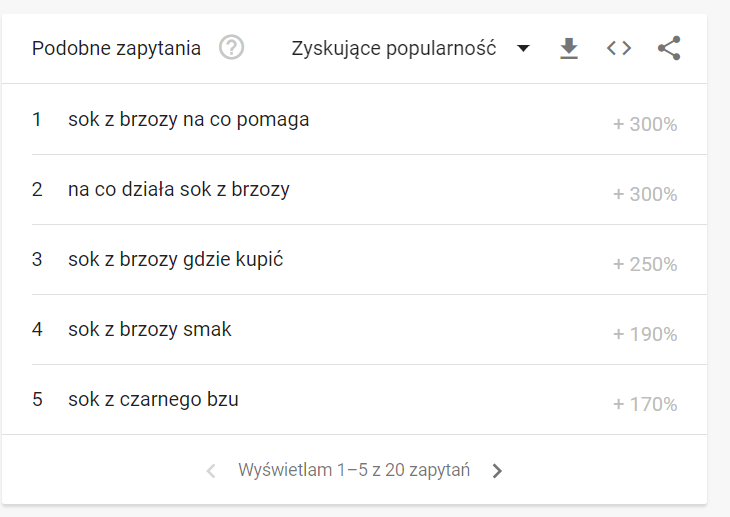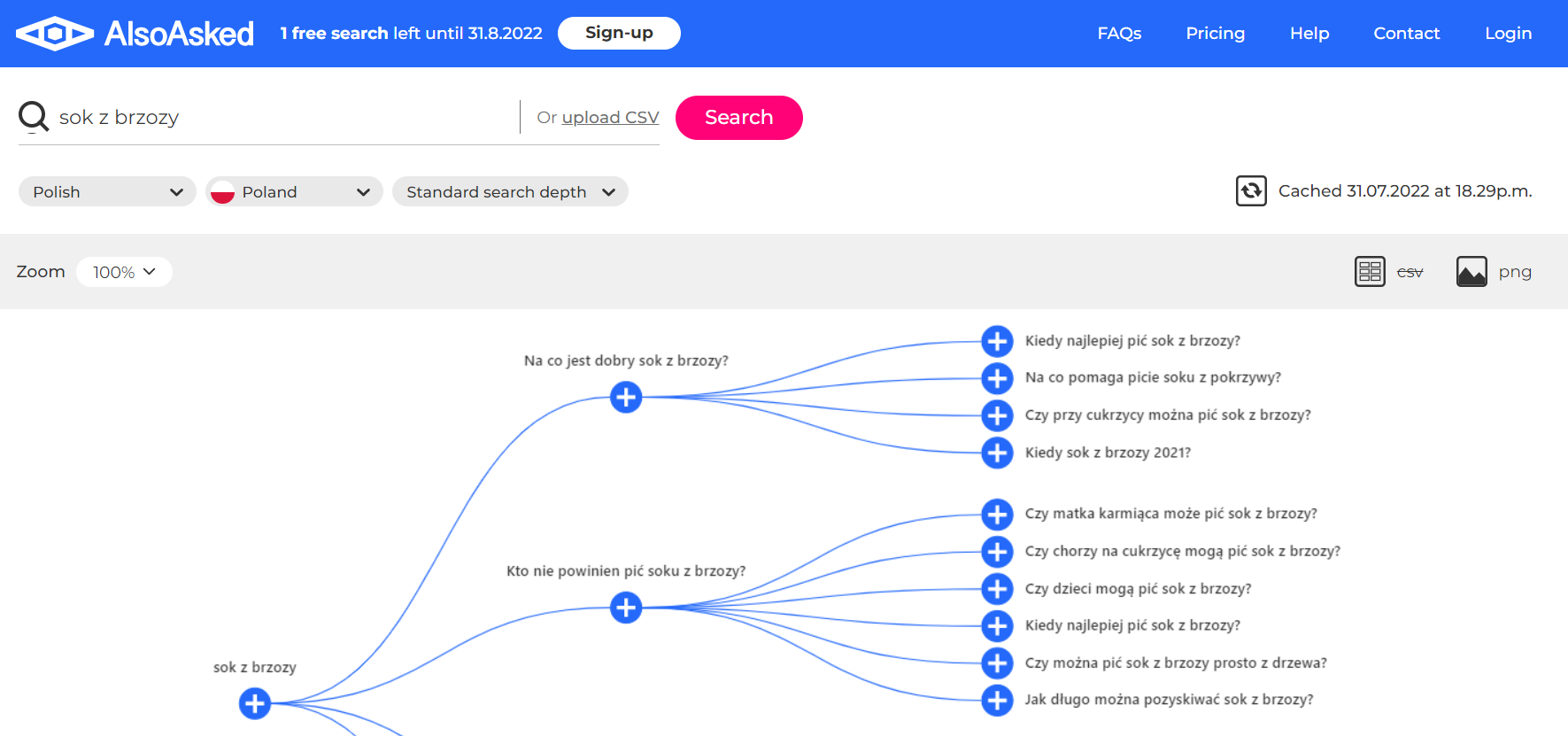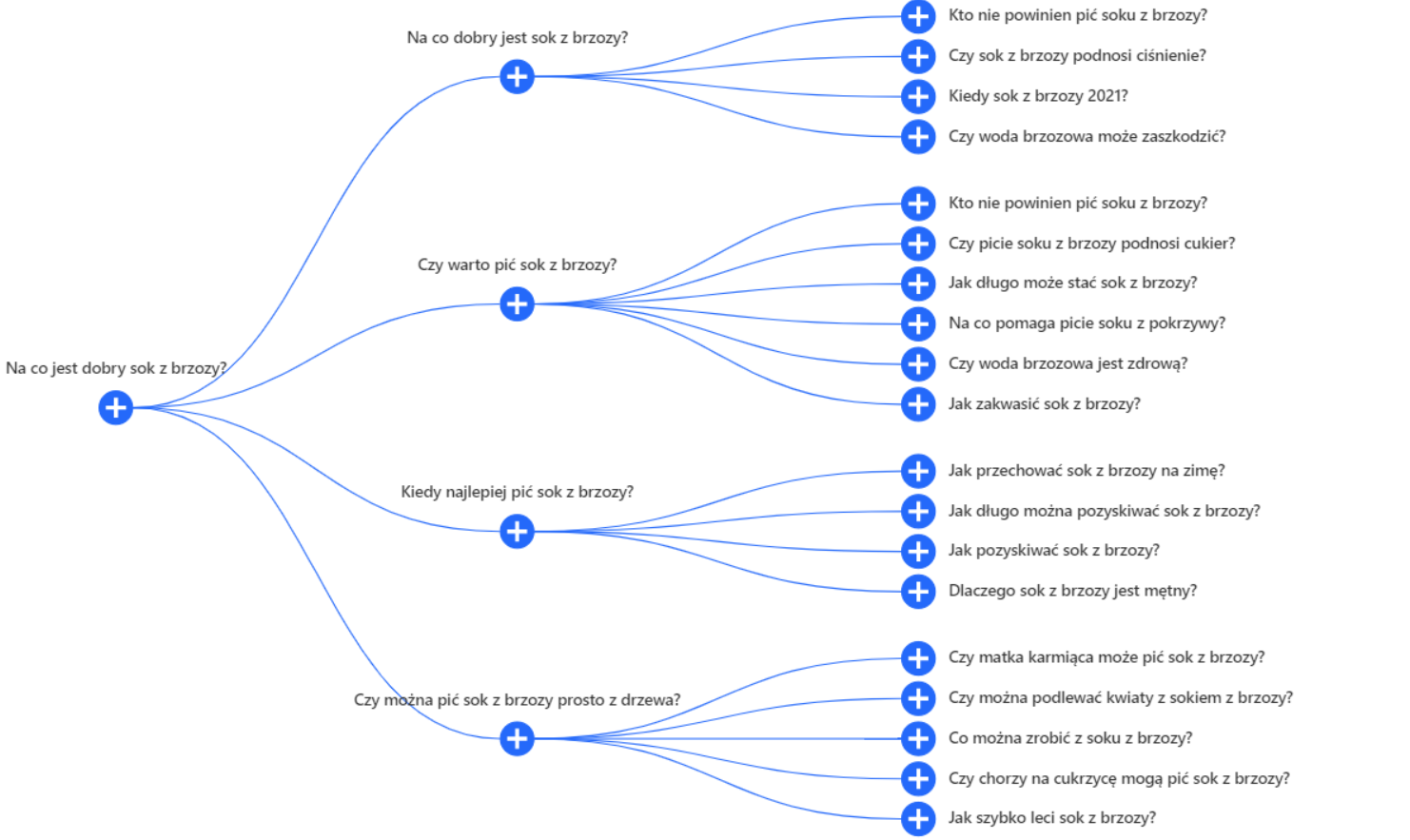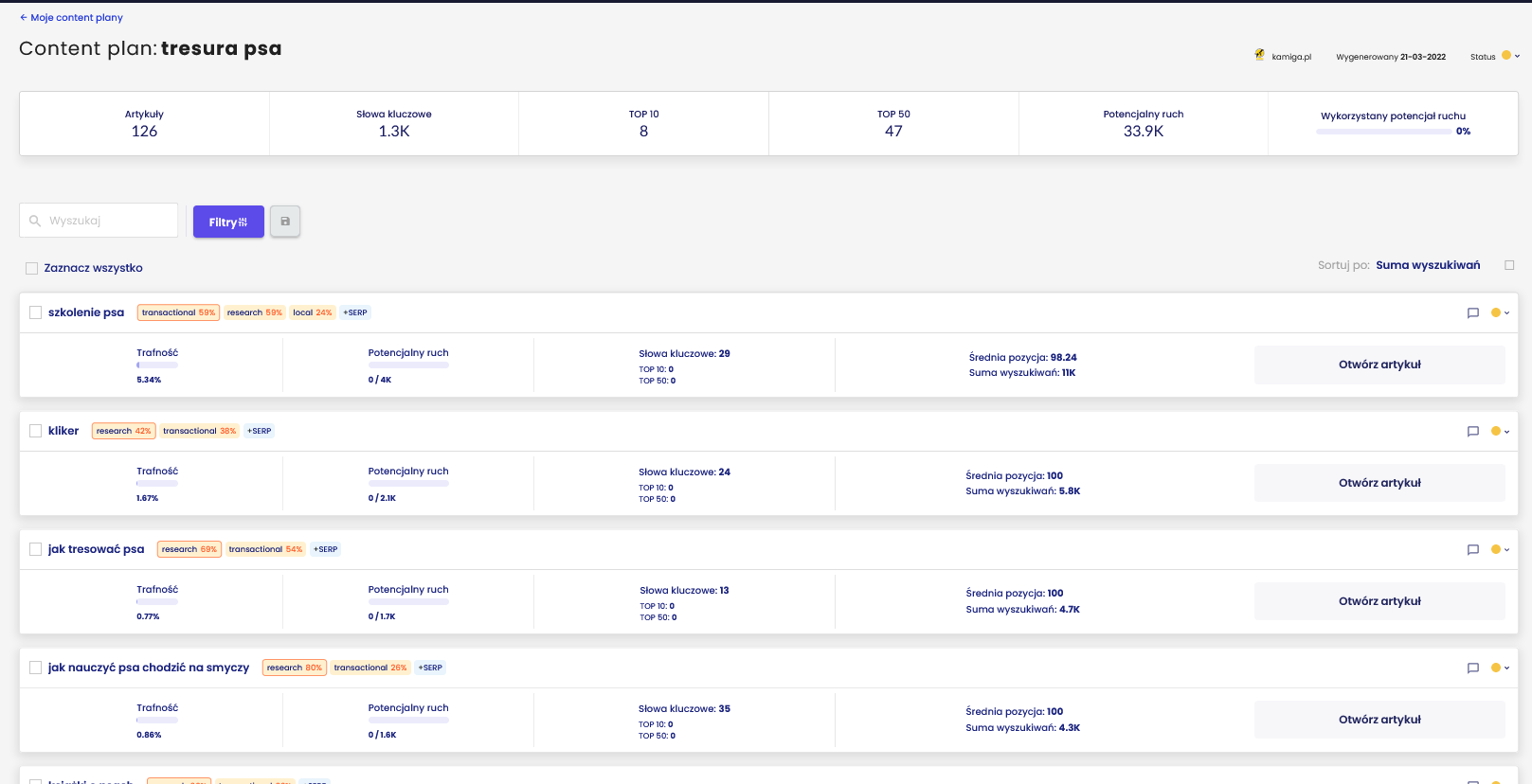There are many benefits to running a blog. With posts you can both acquire, engage, and “initiate” and “finesse” conversions in the sales funnel. This sounds all very well – but what if you’ve been running blog sections for a long time, and ideas for new articles are in short supply? And this is where I will try to help! I’ll suggest how to look for blog topics so as not to lead to cannibalization of pages, and at the same time gain new coverage. And all this in no more than a few dozen minutes.
Topics hints by Google search
.
When you type a search term into Google, you will see a list of hints. If you start your query with, for example, “how”, “what”, “how”, you will get questions that are searched by users on the web.

.
This is basically a ready-made list of topic prompts for your blog that you can use right away. You can verify how often such a query is searched. This will allow you to check the volume of users who search for such a keyword on the web, as well as the trends over the year. Then you’ll have a clear answer as to whether it’s worth covering such or a similar topic on the blog. The data will also make it easier to prioritize the order in which you write your articles, so that you start with the most searched topics.
Following trends
.
The Google Trends tool is worth checking out. It can help verify the popularity of given keywords or topics and discover those that are gaining in popularity.

.
For example, in the above graph, you can see the increase in interest for the keyword “birch sap” on is on an upward wave. Adding an article after the drop in interest may bring us far fewer new users. By getting ahead of the trends and preparing a post with enough time in advance, we potentially gain more user visits.
In Google Trends you can also find hints of queries that are gaining popularity or have been the most popular recently. It’s a good idea to include this information in your content plan and publish the text when the topic starts trending (or, if possible, try to stay ahead of the trend).

.
This is undoubtedly an additional source of inspiration of topics for the blog, which can be easily and quickly adapted to its development.
Similar Queries (People Also Ask)
.
Google displays similar queries, similar to the one the user originally typed into the search engine. On the results page, we will see a list of related queries with their answers. When expanded, we get the answer in the form of a paragraph of text along with a link to the source.

.
With a topic that users are looking for, and a link to an article, we get another source of ideas to develop the blog section.
In addition, it is worth noting that the linked articles in the “Similar Questions” section get a zero position. How do we know this? When we click on a keyword next to the “Search” element, we are shown a results page where Direct Answer applies to that query.

.
I also recommend the Alsoasked tool, which allows you to easily find questions that display in the Similar Questions section (People Alsko Ask).

.
The graph combines questions into groups at different levels. Thus, you can choose more or less specific topics.
But that’s not all: by clicking on a given question (node), we can discover further connections, which are great material for dedicated articles or headlines for one larger post.

.
Content Planner
.
It can be said that Content Planner from Senuto is an extended version of the Alsoasked tool – it too helps you find specific topics for your blog and combines them into topic clusters, but on top of that it takes into account already existing content on your site and the content of your competitors. In this way, it suggests tailor-made solutions.

.
After entering a key phrase (in this case, “dog training”) and a domain (kamiga.co.uk), a list of articles is generated along with a set of keywords to use. If this content is written and published on the site, it will gain higher topical authority, a kind of “expertise factor.”
Why go for high topical authority? Well, if Google recognizes your site as presenting expert knowledge and fully covering a given topic, it will then show you high in search results. Of course, this means an influx of new users to your site.
Content Planner is therefore a veritable goldmine of topics for your blog – topics that, on top of that, are semantically related and tailored specifically to your site.
Blogs and content aggregators
.
Inspired topics for articles can also be reproducible and come from other sites. While browsing through blogs, you may come across topics of interest or ideas for opposites. For example, instead of writing about how to use a particular product, you can write about what not to use it for. Of course, you don’t have to limit yourself to Polish-language content – foreign portals are another interesting way to get ideas for a new blog post.
The process of searching the portals can take a lot of time. But you can make it easier for yourself and use the “site:” operator in Google search. This way, even in aggregators or large portals, you can find the niche you are interested in faster. Just enter the domain name after the “site:” operator and add a keyword related to the topic of interest.
.

.
User questions, comments
.
Questions left in comments or special sections can also be a treasure trove of potential topics. Take motels.net as an example, where a user can ask a question about a product.

.
The topic with the use of an e-book reader on the beach or in another place with a lot of sunlight is unlikely to be the most popular article, but it may give answers to people who are hesitating or looking for arguments to support the choice. And to the blog owner – new visitors.
Comments or expansions next to posts on existing articles can also provide an idea for a new topic to cover or an expansion of an existing one. Or maybe it will be the seed of a whole series of articles?
Google Search Console of your site
.
One of the first steps in topic search should be Google Search Console. This is a tool for site owners and their administrators where we will find a ton of information about our site. In the Effectiveness report, we will also see the queries to which first: our site is displaying, and second: from which we are getting traffic. Just add a filter on the address or word, sort by hits or clicks, to find out from which keywords we do not have satisfactory benefits.

.
Such a search helps us in TENSE Group to find more threads to manage. By doing so, we also track down posts that are not very popular. We can then expand or merge them with another article on a similar topic by moving all or part of the content and redirecting the URL.
Social media and thematic groups
.
Browsing through social media groups, especially industry-specific ones, you may come across a number of questions or topics that are of interest to users at the moment.
Some of the questions are repeated – by observing one Facebook group and contributing to it, you gain topics on several areas, raised by new users of these groups. What can be done with this? Prepare an article with answers to possible questions, and additionally add a link to it in the comment under the post.
With such actions, we have at least two benefits: material that can be searched for from organic results, as well as the possibility of gaining users from social media. This will usually be a one-time boost in the period just after the publication of the post, nevertheless, as I mentioned before, the questions are often repeated, so you can link our material repeatedly.
If you can’t find such threads on Facebook, you can check Quora, for example. The Polish version has several subject circles, and if that’s not enough, there are other languages available. The plus side of Quora is that next to a given question we have a list of other, related topics displayed.

.
These can provide additional sources of inspiration that are definitely worth checking out. Other ideas include searching Twitter and Instagram by tags. Popular graphic and text content can be another source of topic ideas.
Videoblogs and podcasts
.
If written content won’t provide us with new blog topics, all hope is in other formats. Podcasts and video blogs have been gaining popularity for several years. It’s worth verifying whether such materials have been created in your subject area. The topics discussed there can be used and translated into a written version. Many authors use content recycling and translate content into different forms. You can also find podcast and video blog authors who meticulously transcribe each interview or recording into a blog. For searches, I recommend, among others:
- Apple Podcasts (former iTunes),
- Google Podcasts,
- Spotify,
- YouTube,
.
.
.
.
Summary
.
We have at least a few ways to expand the base of topics and content on our blog. It is worthwhile to take interest in at least one, and if it does not meet our expectations or we exhaust its potential – use another.
Of course, it is worth taking into account our user, so here too I recommend verifying both the trend and the volume (number of searches) for keywords related to a given topic. This will help us avoid publishing content that fails to bring new users to our blog.
Avoid writing potentially “dead” posts – if you feel that a topic will not gain popularity, it is better to skip it than to waste power and energy for low interest from current and potential readers.
At the very end – good luck with your content creation! And remember the SEO basics every time – title, hx headings, internal links between articles and preferably unique graphics.
.
 Piotr Michalak
Piotr Michalak